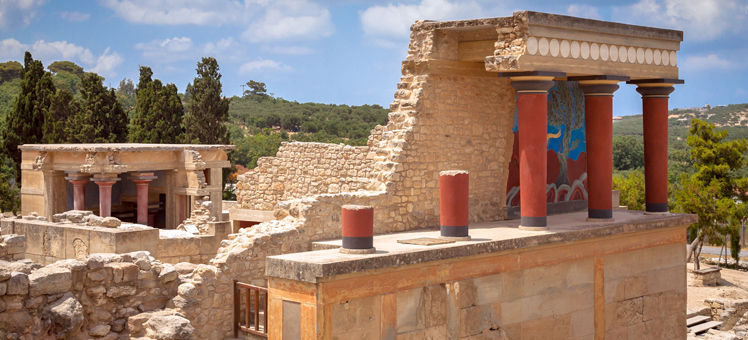 Crete's must-see attractions and must-do experiences range from outstanding museums dedicated to art and history, Minoan palaces, and Roman amphitheaters to deep canyons, spooky caverns, and rugged, treeless sierras where wild goats roam and raptors soar.
Crete's must-see attractions and must-do experiences range from outstanding museums dedicated to art and history, Minoan palaces, and Roman amphitheaters to deep canyons, spooky caverns, and rugged, treeless sierras where wild goats roam and raptors soar.Knossos is Crete's essential archaeological site. It's the one you mustn't miss - only 5 km from downtown Heraklion, but a 4,000-year journey back in time, to the heyday of Europe's first civilization. This hub of a vanished empire has been imaginatively restored, and its pink, ochre, and blue frescoes bring the world of the Minoans vividly to life. Throngs of visitors come here daily from every resort in Crete, so go first thing in the morning to avoid the crowds.
All that remains of ancient Festos is a maze of stone walls and paved courtyards on a hilltop near Crete's south coast. Like Knossos, it was built by the Minoans around 1600 BC and abandoned about 3,500 years ago - nobody knows why. A half-hour drive east of Festos is Gortys, where you'll find the ruins of a Roman amphitheater, pagan temples, and Crete's first Christian churches.
Getting to Lasithi is an adventure. The road to Crete's famed "Plain of Windmills" - 70 km southeast of Heraklion - gets steeper and more serpentine as it heads into the hills, with dizzying views of the sea below. It leads you to an unlikely oasis high in the mountains, where orchards and fields lush with melons, tomatoes, squash, and eggplant are hemmed in by barren slopes. In the heart of this fertile pocket is the Diktian Cave, legendary birthplace of Zeus - an eerie, stalactite-filled grotto.
The White Mountains (Lefka Ori) dominate Sfakia. Wild goats and bearded vultures inhabit this pocket wilderness, among peaks that rise more than 2,000 meters. The spectacular Samaria Gorge slashes from the Omalos plateau, high in the mountains, to the coast. Downhill all the way, it's an easy day's walk. Tougher trails traverse the higher ranges of the White Mountains, and the long-distance E4 trail parallels the south coast.